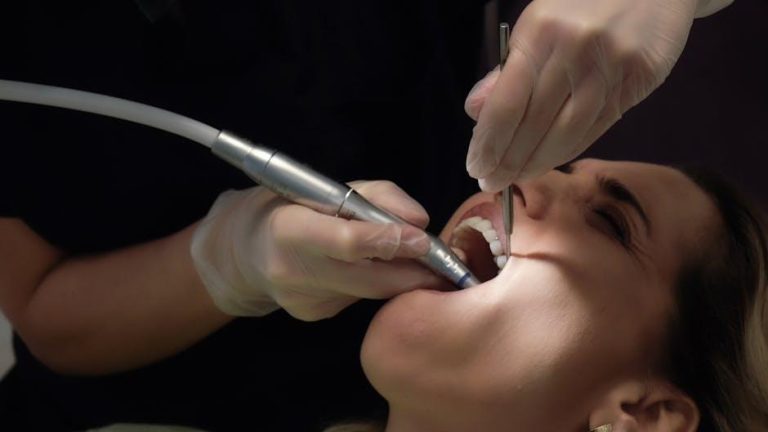
Guide to Dental Insurance: What You Need to Know – Investopedia
Dental health is an essential part of your overall wellness, yet many overlook dental insurance until faced with an unexpected bill. Navigating the ins and outs of dental insurance can seem overwhelming, but understanding how it works can save you money and keep your smile healthy. In this comprehensive guide, we’ll break down everything you need to know about dental insurance—from types of plans and coverage options to practical tips for choosing the best policy for you.
What Is Dental Insurance?
Dental insurance is a type of health coverage designed specifically to help cover the costs of dental care. Unlike most medical insurance, which tends to cover emergency and hospital services, dental plans focus on preventive care, basic treatments, and major procedures at dental offices. It can help reduce your out-of-pocket expenses for routine cleanings, fillings, root canals, orthodontics, and more.
Types of Dental Insurance Plans
When shopping for dental insurance, it’s important to understand the different types of plans available. Each plan type has its own network rules, cost structures, and benefits.
PPO plans offer flexibility by allowing you to visit any dentist, but you pay less if you use dentists within the insurer’s network. PPOs usually have deductibles and coinsurance.
DHMO plans require you to use network dentists exclusively. They often come with lower premiums and fixed copayments but less flexibility to choose your provider.
Also known as fee-for-service plans, indemnity plans let you visit any dentist and the insurance reimburses a percentage of costs, often after deductibles. These plans offer the most freedom but tend to have higher premiums and out-of-pocket expenses. Not technically insurance, discount plans provide discounted rates on dental services when you visit participating dentists. You pay a membership fee instead of a premium. Dental insurance coverage usually falls into three categories: preventive, basic, and major services.
Note: Most dental plans have annual maximum limits (typically $1,000-$2,000) and waiting periods before major procedures are covered.What Does Dental Insurance Typically Cover?
Coverage Type
Common Services Included
Typical Coverage Percentage
Preventive Care
Routine cleanings, exams, X-rays, fluoride treatments
80-100%
Basic Procedures
Fillings, simple extractions, root canals
50-80%
Major Procedures
Crowns, bridges, dentures, implants, orthodontics
30-50%
Benefits of Dental Insurance
How Much Does Dental Insurance Cost?
Dental insurance costs vary widely depending on plan type, coverage, network size, and location. Here’s a quick overview:
| Plan Type | Average Monthly Premium | Typical Out-of-Pocket Costs |
|---|---|---|
| PPO | $20 – $50 | Deductibles, coinsurance |
| DHMO | $15 – $30 | Fixed copayments |
| Indemnity | $30 – $60+ | Deductibles, percentage-based fees |
| Discount Plans | $5 – $20 (membership fee) | Pay discounted rate directly |
Tips for Choosing the Right Dental Insurance Plan
Selecting the right dental insurance plan can be simpler if you keep these practical tips in mind:
- Assess Your Dental Health Needs: If you anticipate mostly preventive care, a basic PPO or DHMO may suffice. If you need major procedures or orthodontics, look for plans that cover those well.
- Check the Network: Ensure your preferred dentist or specialists are included in the plan’s network to avoid higher costs.
- Understand Coverage Limits: Review annual maximums, deductibles, copays, and waiting periods before you commit.
- Compare Costs and Benefits: Sometimes a slightly higher premium pays off if the plan covers more services you need.
- Look for Employer-Sponsored Plans: Employer plans often offer better rates and subsidies than individual plans.
- Consider Family Needs: Choose a plan that accommodates everyone’s age and dental requirements.
Common Dental Insurance Terms to Know
Understanding dental insurance jargon can help you better navigate policies:
- Deductible: Amount you pay out-of-pocket before insurance starts paying.
- Coinsurance: Percentage of a dental bill you pay after the deductible.
- Annual Maximum: Maximum amount insurance will pay in a year.
- Waiting Period: Time before certain services are covered.
- Network: Dentists and specialists contracted with your insurer.
Real-Life Example: Jane’s Dental Insurance Experience
Jane, a 35-year-old teacher, had never had major dental work before. She chose a PPO plan through her employer with moderate premiums and decent coverage for basic and major procedures. When she needed a root canal, her insurance covered 70% of the cost after she paid her deductible. Thanks to using in-network providers, Jane saved over $500 compared to paying out-of-pocket. Jane’s experience underscores the importance of understanding your insurance details and choosing the right plan.
Conclusion
Dental insurance is a valuable tool that can significantly reduce the financial burden of maintaining oral health. From routine cleanings to complex dental procedures, having the right coverage in place can save you money and protect your smile. By understanding the different types of plans, what they cover, and the costs involved, you can make an informed decision that fits your needs and budget. Remember to review your dental health regularly, choose a plan that matches your lifestyle, and don’t hesitate to shop around for the best options. A healthy smile is a worthy investment — and dental insurance can help you achieve it.


